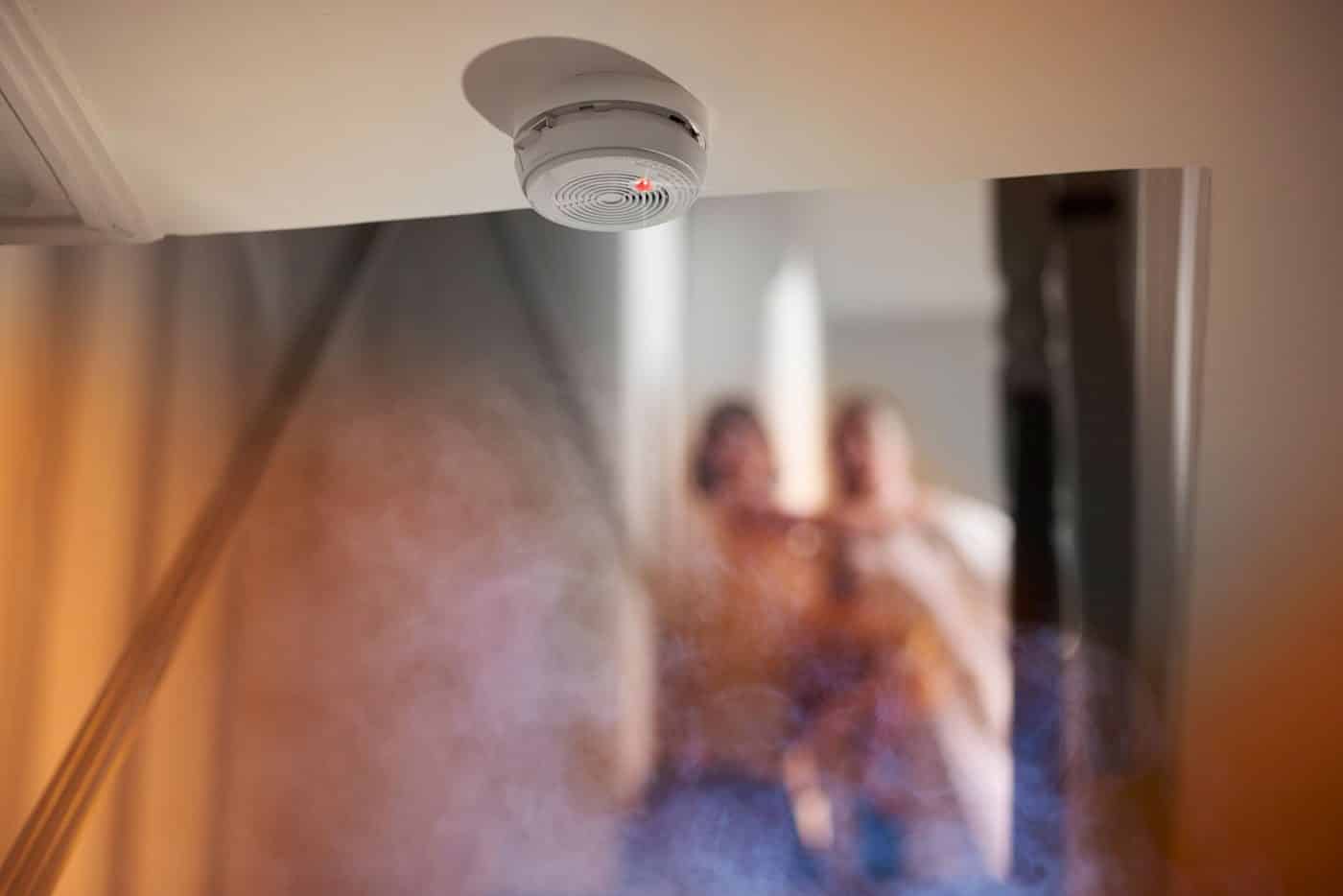When it comes to protecting your home and family, are you protected from the danger of fire? Make sure your home has working smoke and fire alarms, and make sure to develop and practice a family escape plan.
Fire can strike anyone, anywhere, anytime. A burglar won’t steal your family photo albums, but a fire will. Jewelry can be replaced, but baby pictures can’t. Even though you have a monitored security system, without monitored smoke detectors, your home will never be secure against one of the most dangerous intruders.
Wireless smoke and heat detectors are monitored by our three central stations 24 hours a day, seven days a week—providing you and your family with round-the clock protection and the peace of mind you deserve.
When located on all levels of a residence and in all bedrooms, monitored detectors provide the best kind of early warning fire protection. If they sense a fire developing, they signal an alarm control, which activates all evacuation horns throughout a residence and sends a fire alarm signal to the central station, which will notify the fire department. Monitored detectors provide fire protection when you are home or away. As part of a home security system, monitored detectors provide both an AC primary power supply and a rechargeable backup battery.
Did you know?
- Half of home fire deaths result from fires reported between 11 p.m. and 7 a.m., during which only one in five home fires were reported.
- Three out of five home fire deaths between 2010-2014 happened from fires in homes with no smoke alarms or no working smoke alarms.
- One-quarter of home fire deaths were caused by fires that started in the bedroom. Another quarter resulted from fires in the living room, family room or den.
- In 2015, U.S. fire departments responded to an estimated 365,500 home structure fires. These fires caused 2,560 deaths, 11,075 civilian injuries, and $7 billion in direct damage.
- Cooking equipment is the leading cause of home fire injuries, followed by heating equipment.
- Smoking materials are the leading cause of home fire deaths.
- According to an NFPA survey, only one-third of Americans have both developed and practiced a home fire escape plan.
- Almost three-quarters of Americans do have an escape plan; however, less than half ever practiced it.
- Working smoke alarms cut the risk of dying in reported home fires in half.
- In fires considered large enough to activate the smoke alarm, hardwired alarms operated 94% of the time, while battery powered alarms operated 80% of the time.
- When smoke alarms fail to operate, it is usually because batteries are missing, disconnected or dead.
(Statistics via National Fire Protection Association)
- Draw a map of your home by using the NFPA’s grid in English or Spanish with all members of your household, marking two exits from each room and a path to the outside from each exit.
- Practice your home fire drill twice a year. Conduct one at night and one during the day with everyone in your home, and practice using different ways out.
- Teach children how to escape on their own in case you can’t help them.
- Make sure the number of your home is clearly marked and easy for the fire department to find.
- Close doors behind you as you leave – this may slow the spread of smoke, heat, and fire.
- Once you get outside, stay outside. Never go back inside a burning building.
(Tips via National Fire Protection Association)
Learn more about smoke and CO detectors from Acadian Total Security.



